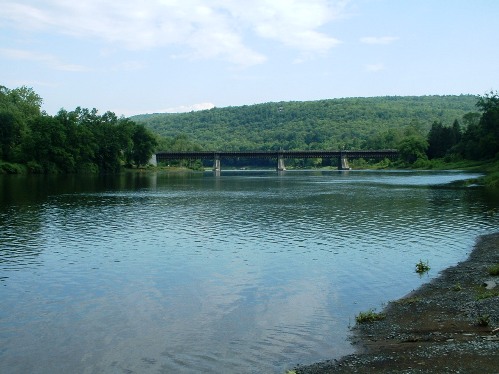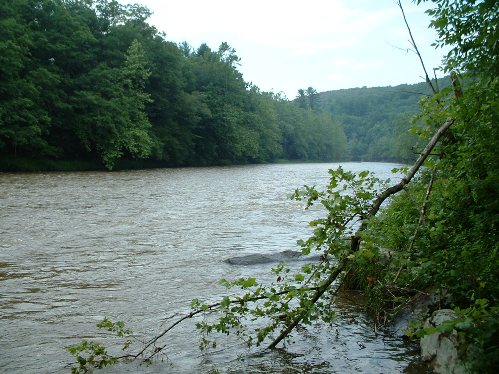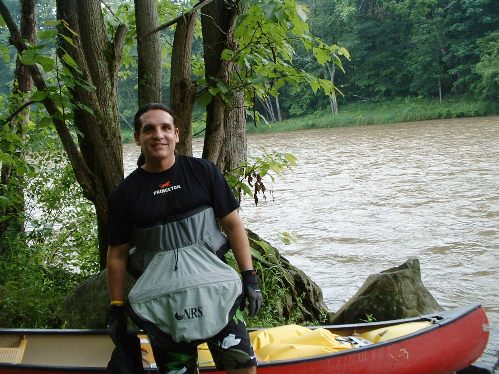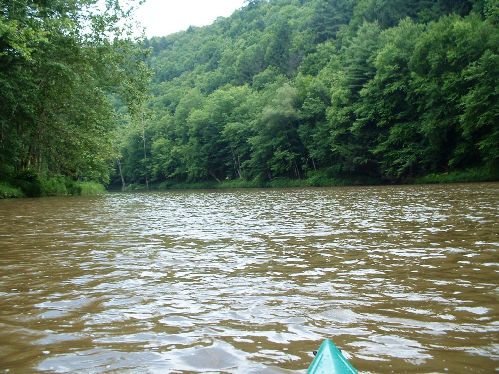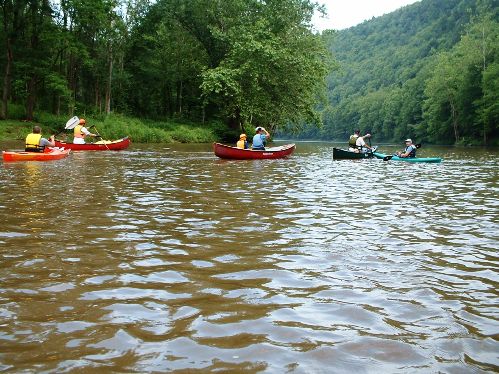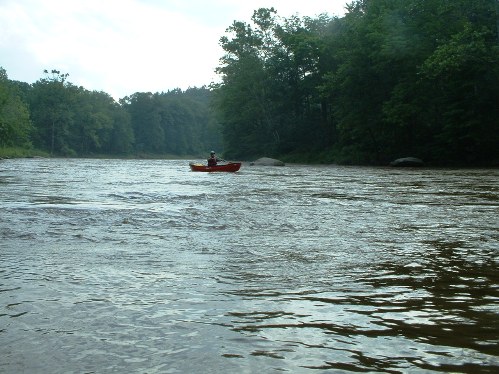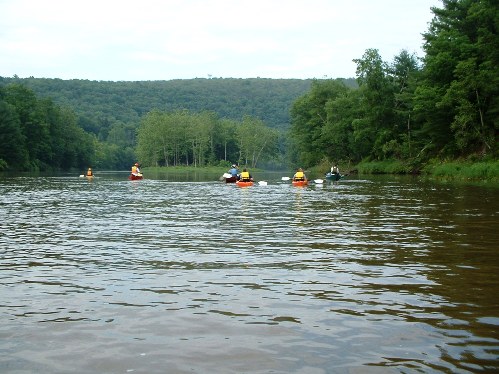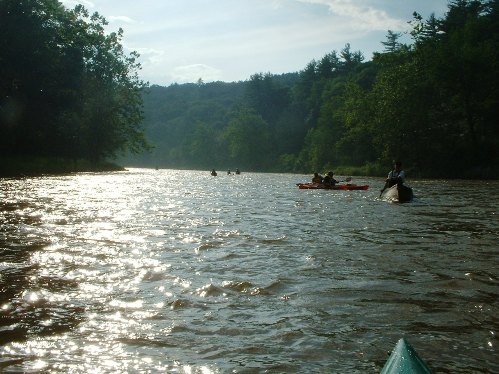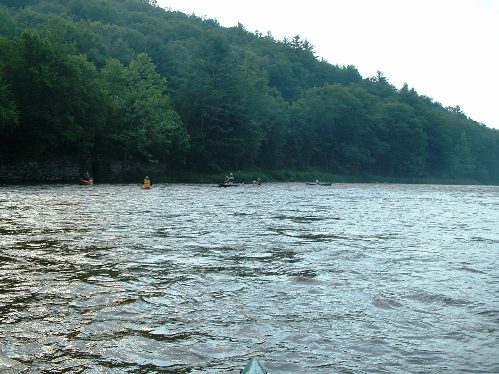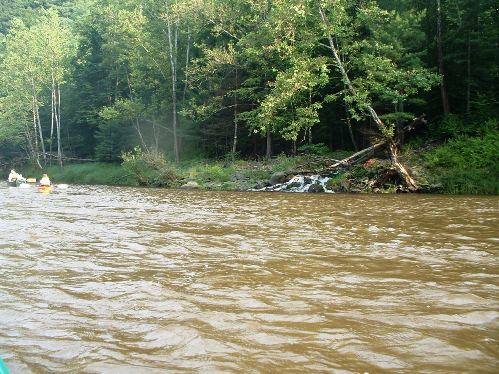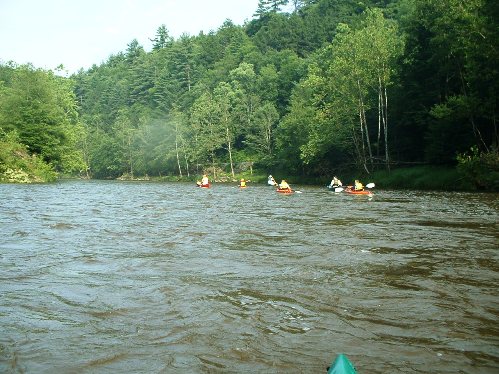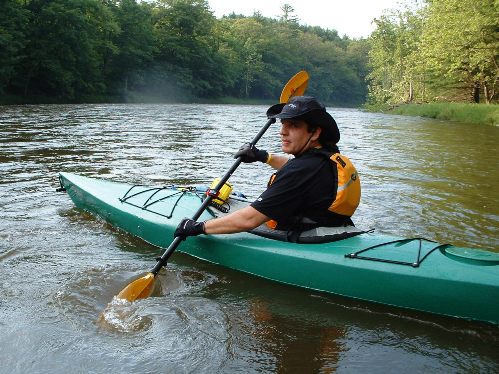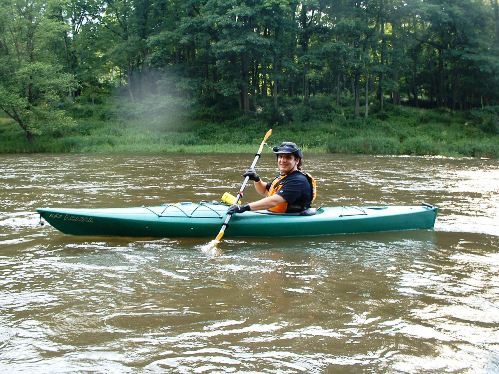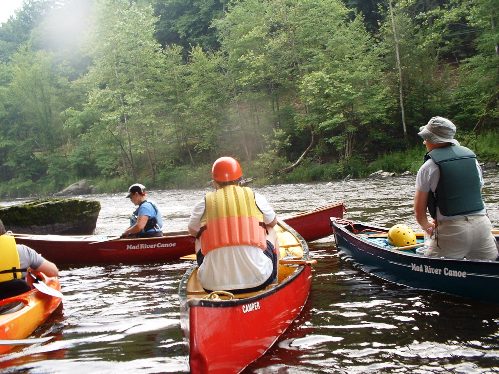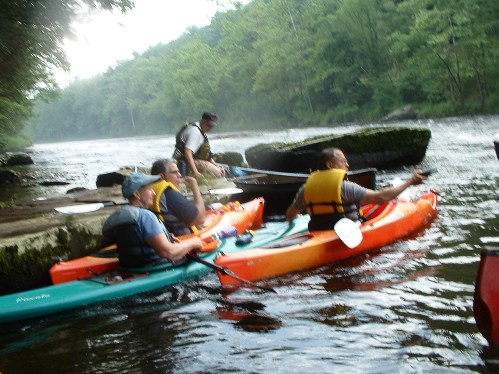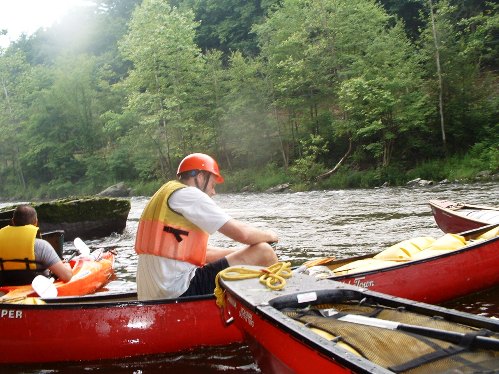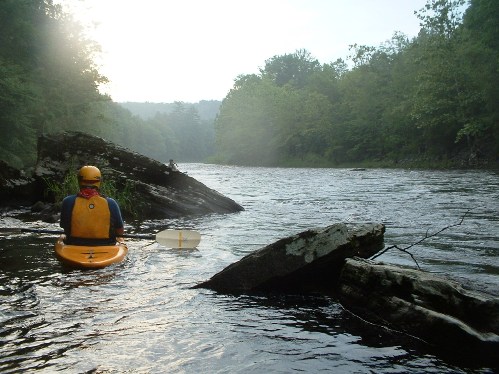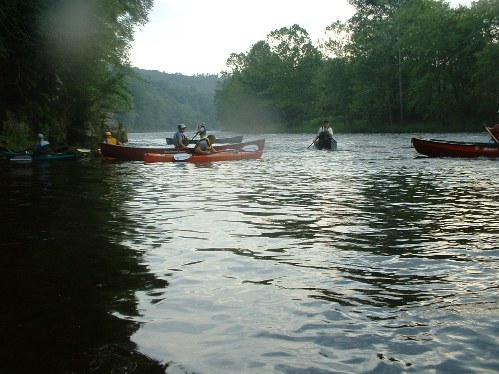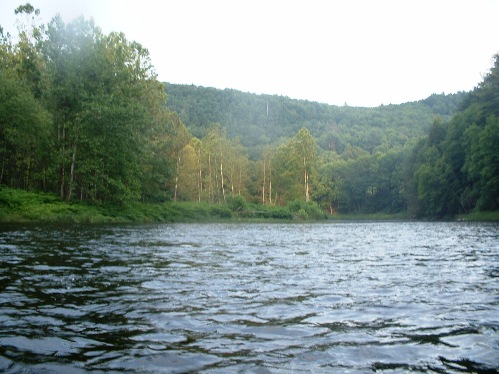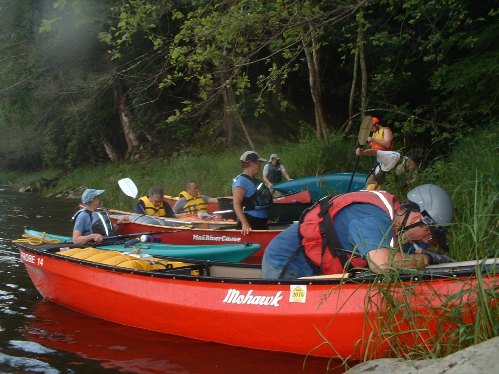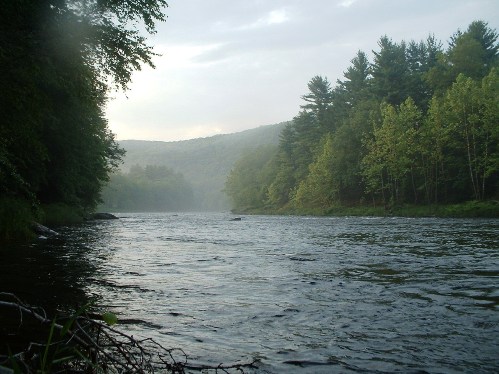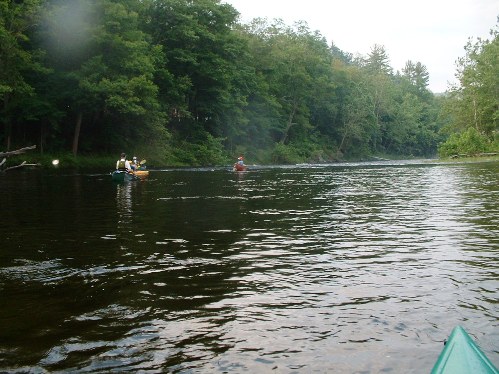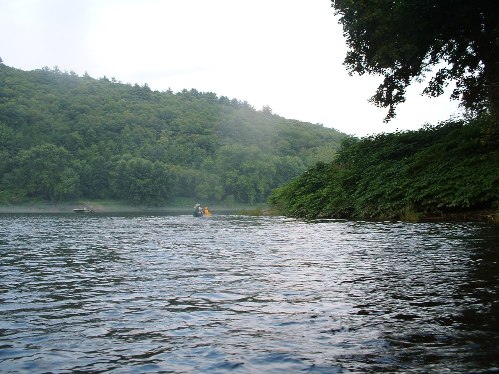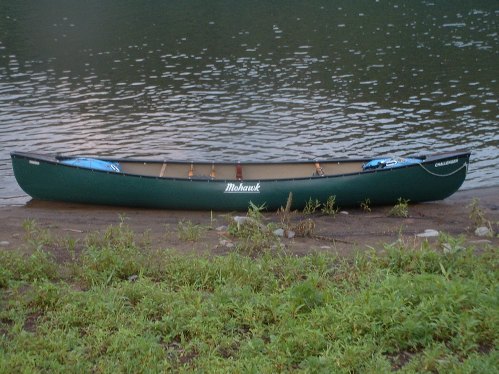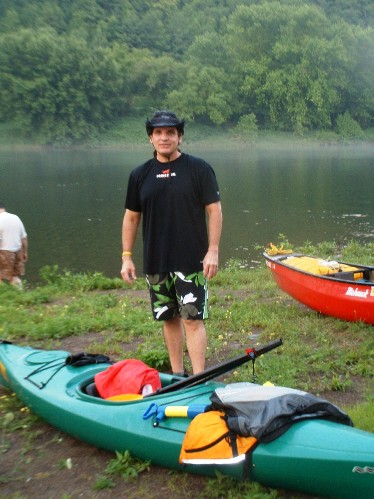When it Rains
by Bob Rancan
Saturday, June 20, 2009 - Pequest River
Tuesday evening, June 23, 2009 - Lackawaxen River
Trip Coordinator: Bob Rancan
Lackawaxen River photos by Clayton Bridges
There are rivers and streams to paddle when it’s cold from late in the fall, through the winter and into early spring. The best are hard to catch, out of the way. When they are up though the weather doesn’t always cooperate, there aren’t leaves on the trees, wildflowers in bloom or breeding birds and their young. Every so often it rains a lot at the right time. My rain gauge collected 2.4 inches in the six days around the Summer Solstice this year. Opportunity was knocking so I rounded up some good friends and went out to paddle a couple of Class II streams that I hadn’t seen in years.
On Saturday, June 20, Henry Degenhardt and I found water in the Pequest River in Warren County, NJ. It had been 17 years since my last visit and about the same for Henry. We decided to start at the state trout hatchery and take out near Belvidere’s municipal center, thus avoiding the two dams near the Delaware. While setting up our shuttle, we scouted as much of the river as we could see from the road, checking especially the low railroad bridges and even walking out to the low footbridge at the old picnic grounds above Route 31.
The Pequest is often too low to paddle or, even when running, very rocky with shallow spots hard to negotiate. But danger comes when it rises too high. The steel railroad bridges and several footbridges may lack clearance plus the narrow, rushing stream doesn’t give many friendly options to eddy out. What we saw looked good. The gauge at Pequest registered 2.41, 311 cfs as we began. Everything was perfect. Of course, as we set out the light rain started getting heavier. The gauge had risen to 2.43, 319 cfs by the time we passed. The rocks turned out to be the same color as the muddy water just covering them and the braided channels all seemed to have enough water and gave no clue as to which way was the right way. Remarkably, we were not stopped by deadfall and although it was a technical and tricky run, it was a great day. Although birding in the rain while paddling quick water isn’t recommended, I had an osprey, several great blue herons, a red tail hawk, kingbirds, tree swallows, phoebes and catbirds. And yes, we stopped at Hot Dog Johnny, Buttzville, NJ for a dog and a birch beer.
On Tuesday evening, June 23, Henry, Chris Meyers and my original partner Walter P. Johnson joined me for my 100th paddle down the Lackawaxen. With all the rain, the entire river had been running high and even by midday the gauge at Hawley showed 3.63, 832 cfs. I had not been through this section since March, 2002. Because the Lackawaxen is held back behind U.S. Army Corps. Of Engineers dams on the West Branch at Prompton and Dyberry Creek a summer flow doesn’t stay up for too long. By the time we put in at Hawley around 5:30 PM it was running at 3.52, 773 cfs. It turned out to be a good level and the fast sections and drops combined with the scenery of the high cliffs and intact walls of the D & H Canal to make for a perfect evening. Two bald eagles, one mature and a very mottled immature, an alarmed deer who jumped into the current, almost losing her fawn in the process, belted kingfishers, tree swallows, two yellow warblers, phoebes, a great blue heron, a female wood duck and two groundhogs were the fauna spotted. At the power plant another 800 or so cfs was added to the flow and the standing waves in the narrow gorge at Kimbles put water in all three boats, especially my tandem. The big center air bag did its job however, and we kept the Old Town afloat and upright. A word of caution, there are two or three spots between Hawley and Kimbles where the river is split by islands. Because the river’s right bank is high and supports a rail right of way, there was evidence of some erosion and some uprooted trees leaning down the banks above and into the river. The opposite sides of the islands were shallower with hard to see channels. We did encounter a deadfall in a narrow spot and one boat wasn’t able to slide over it. Everything turned out fine but it would be wise to scout when you spot the new stone fill on the steep banks of the rail grade.
Maybe I should stop at 100 but with the long summer nights and the planned releases, I’ll probably return to the mighty Lackawaxen.
Bob
Lackawaxen River Photos

